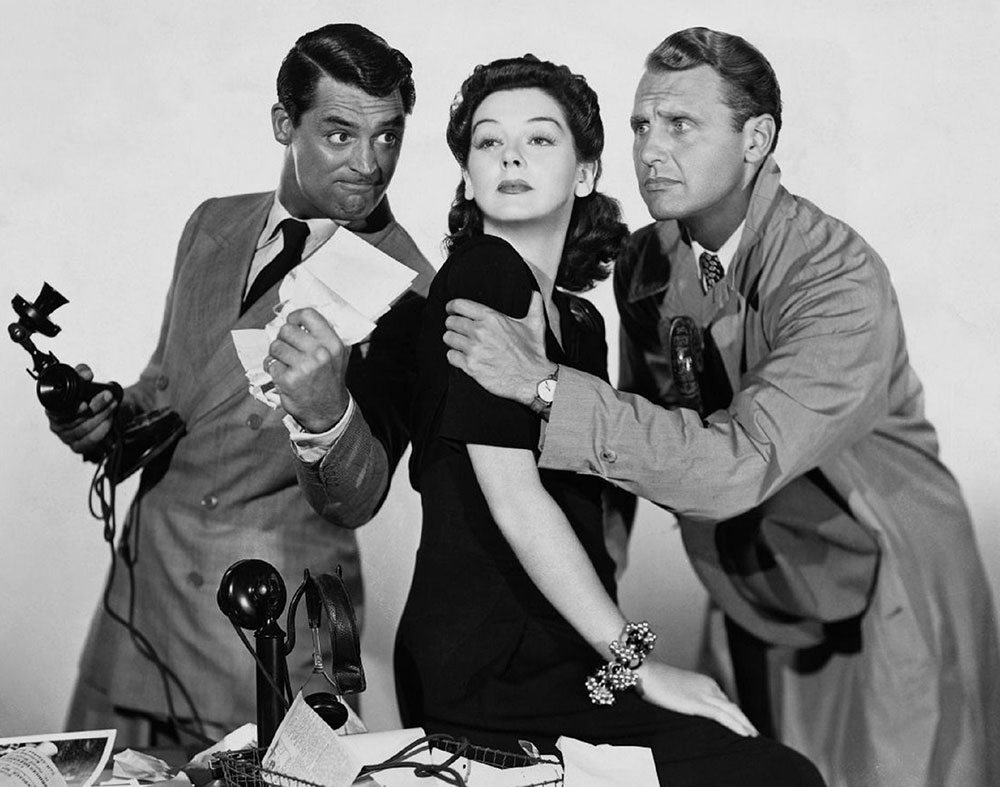From radio to Hollywood, discover the unique history of why Hollywood’s elite spoke with those ‘funny’ accents in the 1930s.
If your parents are anything like mine, you were probably exposed to the Golden Era of classic Hollywood films at a young age. I remember watching actors such as Cary Grant, Grace Kelly, Elizabeth Taylor and Katherine Hepburn all speaking with a strange accent that I couldn’t recognise. You know the one I’m talking about. It sounds posh, but it’s neither British nor American. So what is it? And why isn’t it used anymore?
You probably haven’t heard the term before and I certainly had to do a lot of digging around to discover its correct name, but this accent is known as the Mid-Atlantic accent or Transatlantic accent.
What’s interesting about the Transatlantic accent is that it didn’t naturally evolve like accents normally do, instead, it was taught. Originating from the American upper class, the Transatlantic accent was taught in American schools for actors right up into the early 1900s.
This consciously learned accent was a blend of American English and British English which favoured neither. Its premise was to neutralise strong accents and eliminate Britishisms and Americanisms so that the speaker could be understood on both sides of the Atlantic Ocean. Hence its name.
The Transatlantic accent is the American equivalent to the British Received Pronunciation, or put simply the Queen’s English. According to the Concise Oxford English Dictionary, this is “the standard accent of English as spoken in the south of England”.
Origins in Radio
One theory as the origins of the accent comes from the “announcer English” used by radio broadcasters. Due to the poor quality of microphone and loudspeakers at the time, the speaker needed to enunciate very clearly and use a lot of emphases to ensure their audience could understand them.
Transatlantic English began the dominant dialect used by the North-eastern American upper class throughout the first half of the 20th century. During this time, theatre was a central part of the elite culture in the region, so naturally their accent was adopted.
The accent gained even more momentum with the beginning of American cinema in the early 1900s in New York City and Philadelphia. By the mid-1910s, the Transatlantic accent spread as far as Los Angeles.
Characteristics of the Transatlantic Accent
The Transatlantic Accent has many defining factors, some of which are quasi-British elements. One example is it’s lack of rhoticity, meaning the speaker drops the /r/ sound at the end of words and replacing it with an /ah/ sound. For example, driver becomes dri-vah and cleaner sounds more like clea-nah.
Transatlantic speakers often use softer British vowels pronouncing castle as car-sel, and dance like darhnse. Another characteristic is its emphasis on pronouncing the letter /t/. While the typical American accent tends to swap out the letter /t/ for /d/ and pronounce water like war-dah, and paper like pay-pah, Transatlantic speakers will stress the /t/.
The Demise of the Transatlantic Accent
So, why don’t we still hear the transatlantic accent in films today? Well, according to the linguist William Labov;
teaching of this pronunciation declined sharply after the end of World War II. As a result, this American version of a ‘posh’ accent has all but disappeared even among the American upper classes. The clipped English of George Plimpton and William F. Buckley, Jr. were vestigial examples.
Listen out for…
Princess Leia in Star Wars (1977). While it’s not completely consistent, listen closely and you’ll hear Carrie Fisher’s use on and off a Transatlantic accent.
Fan of the TV sitcom Frasier? Surprise! Both of the Crane brothers speak with this accent. So too does Pete Campbell from Mad Men.
In the James Cameron’s Titanic, Kate Winslet, Billy Zane and Frances Fisher all converse using the Transatlantic accent.
So, there you have it. The next time you watch a classic Hollywood film from the 1930-40s you’ll know why they speak with that funny Transatlantic accent.
If you liked this, don’t miss these!
- 9 Perfectly Correct English Phrases That Will Break Your Brain
- 10 Bizarre Ways to Say ‘LOL’ in Different Languages
- Blond or Blonde: Why Do Genders in English Exist?
- 25 Wonderful Phrases Shakespeare Invented that You Use Every day
- 15 Country Flags and their Hidden Meanings You Won’t Be Able to Un-see
- 30 Incredible Stories Behind English Idioms and Phrases You Use Every Day
Sources
Wikipedia / The Atlantic
Over to you!
Did you know about the Mid-Atlantic / Transatlantic accent? Do you like how it sounds?
Let me know using the comments section below or join me on social media to start a conversation.
Thanks for reading and I hope you enjoyed this post.
Like what you see? Subscribe using the form below to have all of my posts delivered directly to your email.


4 comments
Love 1930s movies and the accent as well.
In love the classics too :)
Being a classic movie enthusiast, I’ve noticed this ‘accent’ with more than several actors from the movies classic era, 30s. – 40s, and became curious as to how it came to be. Was thinking particularly of Grace Kelly, Bette Davis and Katherine Hepburn; I’m sure there are many, many more. Thanks for the history on ‘TransAtlantic / MidAtlantic accents!!
My pleasure. I felt the same way too so I did some research and discovered the Transatlantic accent. So glad to hear you enjoyed it :)